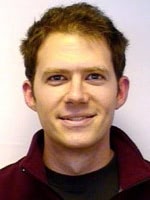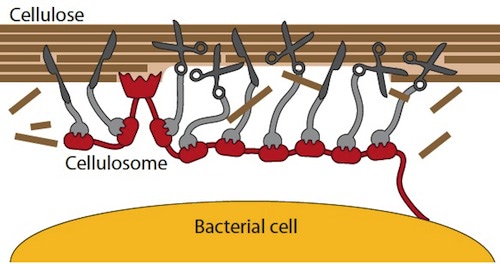- Undergraduate
Bachelor's Degrees
Bachelor of ArtsBachelor of EngineeringDual-Degree ProgramUndergraduate AdmissionsUndergraduate Experience
- Graduate
Graduate Experience
- Research
- Entrepreneurship
- Community
- About
-
Search
All Thayer News

Dan Olson
Engineers at Dartmouth Announce Latest Advance in Biofuels Production Research
Mar 04, 2011
CONTACT: Catharine Lamm
1-603-646-3943

Dan Olson
Engineers in the Lynd Research Lab, led by PhD candidate Dan Olson, have brought the world one step closer to affordable production of cellulosic ethanol, a leading candidate for a renewable and secure transportation fuel.
The group has made the first deletion of a gene from the bacterium C. thermocellum that's involved in production of its "cellulosome"—an extracellular multi-enzyme complex created by certain strains of bacteria. This bacterium's cellulosome is an order of magnitude more efficient at breaking down cellulose than current enzyme technology. Since added enzyme is one of the biggest barriers to cost-effective cellulosic ethanol production, understanding how this cellulosome works may lead to development of cheaper enzymes. Gene deletions, such as this one, will pave the way toward a full understanding of the cellulosome's function.
The study, entitled "Deletion of the Cel48S cellulase from Clostridium thermocellum," will be published in the Proceedings of the National Academy of Sciences (PNAS), and is currently available online.
The cellulosome can be thought of as a Swiss Army knife with enzymes for tools. If part of the cellulose requires both a knife and scissors to break it down, then with conventional methods, a "knife" enzyme might float by and make a cut but the process would stop until a "scissors" enzyme happened to float by as well. By contrast, the "knife" and "scissors" of this cellulosome are physically connected and can digest a piece of cellulose much more efficiently.

Although many parts of this cellulosome have been previously identified, understanding the function of each part requires the ability to modify the genome of C. thermocellum. Researchers at Thayer School and at Mascoma Corporation in Lebanon, NH, have collaborated to develop this capability over the past several years.
For contacts and other media information visit our Media Resources page.
